Wind turbines are an increasingly important part of the global energy market but keeping them properly maintained can present unique challenges.
While they are complex pieces of machinery, they still have many of the same basic components of many mechanical assets so many basic principles of asset maintenance still apply.
Let’s look at some things to look for when maintaining wind turbines and what you can do to keep costs under control to boost your return on investment.
What is wind turbine maintenance?
Wind turbine maintenance is the set of inspections and tasks that wind farm owners and operators undertake to keep the turbines on their farms operating as efficiently as possible. Wind turbines are becoming are an important part of the energy grid across North America, particularly in the U.S. It’s critical that all wind farm owners and operators take all the necessary steps to ensure their turbines run as long and efficiently as they can.
What are the challenges of maintaining wind turbines?
As with any type of machine or mechanical equipment, there are inherent challenges with maintaining them effectively. Some of the largest ones include:
- Location
- Design of the turbines
- Personnel challenges
- Lack of data
- Unscheduled maintenance
Location
As the name suggests, wind turbines require a lot of wind to generate electricity, so they need to be placed in strategic geographical locations to be effective. This often means building wind farms in remote locations far away from cities and civilization. As a result, simply getting technicians out to the turbines that need to be repaired can present logistical challenges that have to be considered in maintenance plans and costs.
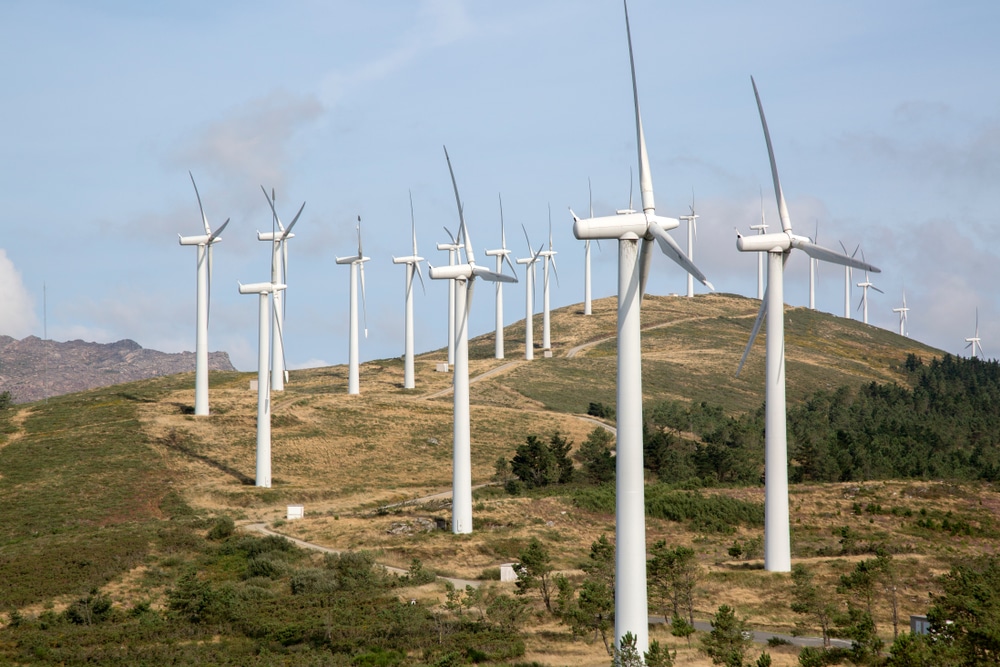
Turbine design
Another feature of the nature of wind turbines is that they must be quite high up to reach the sort of wind currents strong enough to generate significant power. This means that most wind turbines sit about 300 feet off the ground which presents another set of challenges in getting technicians to the physical part that needs to be repaired.
Maintenance providers often use cranes and high-tech safety equipment to get technicians to the repair site and keep them safe while performing their tasks.
Lack of data
Relatively speaking, compared to the more traditional forms of generating energy such as oil and natural gas, wind turbines are a fairly new technology and have simply not been around long enough for us to have as much data on their maintenance and operations as with other, more traditional forms of energy. As a result, maintenance providers must learn and adapt as they continue their operations, so keeping detailed records of maintenance tasks is vital to learning how to improve efficiencies and cut costs.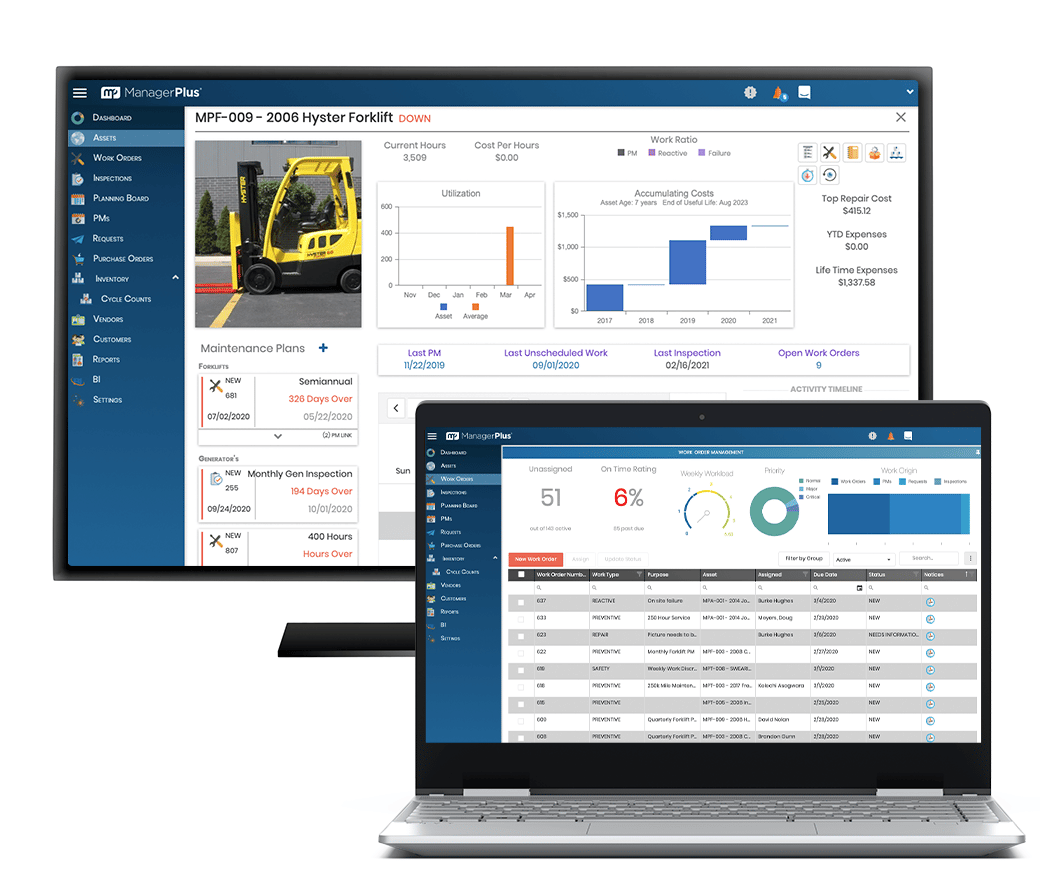
Unscheduled maintenance
No matter what industry you’re in, downtime affects your bottom line, and unexpected downtime can be devastating. Many maintenance teams still operate under the “if it ain’t broke, don’t fix it,” mentality which can be especially costly for wind turbines.
The average downtime when a gearbox fails is anywhere from 10-14 days, which means you’re not only paying to repair or replace the gearbox, which could include overtime, rush shipments for parts and equipment, and more, but you’re also losing out on any sales from the electricity generated by the down turbine.
Keeping unplanned maintenance to a minimum keeps your costs low and extends the life of the turbines.
What kind of maintenance do wind turbines need?
As with any complex mechanical asset, maintaining wind turbines involves multiple variables to consider. Maintenance tasks are both time- and usage-based and require a range of trained personnel. Each manufacturer’s turbine is different, but most of them have the same basic functions. GE suggests several categories of maintenance tasks in their maintenance schedule checklist.
Inspections
Regular inspections are the first step in the maintenance process. These include visual inspections of things like:
- Exterior of the generator
- Electrical systems and cabinets
- Generator frame
- Rotor
- Bearings
- Desiccant ventilation
- Exciter
It’s important to make sure your technicians inspect the internals of the more critical pieces of the turbine such as the gearbox and shaft coupler. A boroscope can give your technicians a good look inside the gearbox without having to take it apart to get inside.
GE recommends these inspections to take place soon after instillation (after 360 usage hours), and then semi-annually (every 6-7 months or around 4,000 usage hours). After 5 years or 40,000 hours, you should perform a complete, thorough inspection of the turbine.
Disassembly and overhauling
It’s a good idea to manually disassemble and inspect the subassemblies of the generators every year. This gives you a good idea of how the more critical parts of the turbine are holding up and when you might need to schedule maintenance for them.
Function test
Function tests are physical measurements of the generator using simple manual operation to check the equipment is functioning properly, or by using more sophisticated testing equipment such as thermographic imaging equipment.
Lubrication
By design, wind turbines have many moving parts, and keeping them well-lubricated is one of the most critical and cost-effective ways to keep them in good working order. The most important thing you need to keep well lubricated is the gearbox. Unlike most other repairs, a failed gearbox can keep a turbine offline for up to 14 days.
The gearbox is not the only important component that requires regular lubrication. There are generator bearings, blade bearings, and other points on the blades that need lubrication as well. Wind turbine blades are designed to move or “feather” to the optimal angle to match the highest wind speeds and the parts that control this feathering need to stay lubricated too.
The stress and requirements of each of these components mean that you need to use a wide range of oils, greases, and other lubricants to ensure the best results. We’ve already talked about how difficult it can be to simply get your technicians to the repair site so they must have all the correct items they need before they ever get to the turbine. The best way to do that is by effectively managing your inventory with inventory management software.
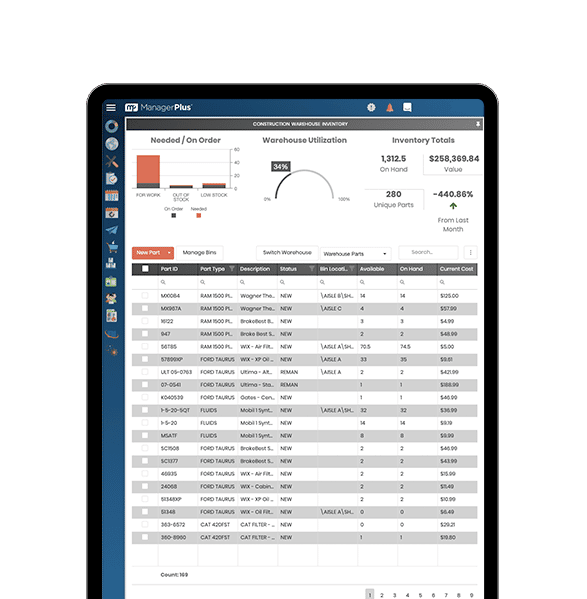
Other repairs and replacements
As with most any other complex mechanical assets, there are other more common components that need to be repaired and replaced regularly. Keep an eye out for bolts that need to be tightened, change filters and bearings regularly according to recommended schedules, and perform and other tasks common to mechanical equipment.
The time frames for performing these tasks loosely follow the bathtub curb for asset reliability which tells us that most equipment failures will happen soon after installation of the asset, known as the “infant mortality” period. If an asset makes it through this period, the frequency of required maintenance falls considerably until the asset begins to approach the end of its useful life.
What does it cost to maintain wind turbines?
Reuters recently reported on data released from IHS Markit, a research institution, that the median cost for operations and maintenance (O&M) for a wind turbine was $48,000/MW. The report also stated that those O&M costs an average of $42,000 – $48,000 for the first/MW during the first 10 years of operation, but the severity of the costs often depended on the age, location, and O&M strategy for the turbine.
One of the co-authors of the report predicted that O&M costs will continue to increase significantly over the next few years so finding ways to manage costs and improve performance are critical for turbine owners and operators.
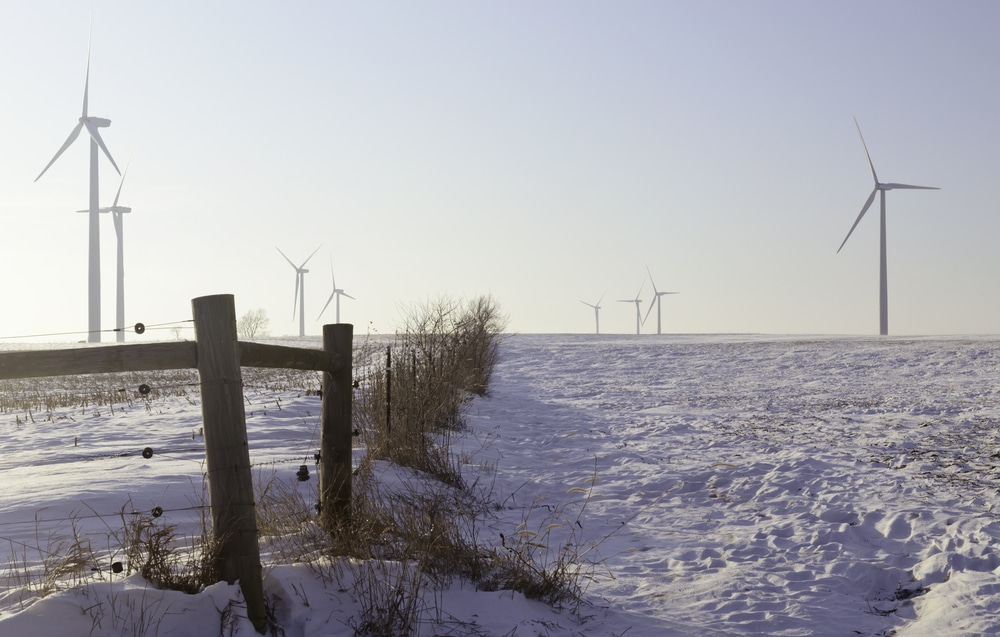
How can you control maintenance costs for wind turbines?
The average age of most wind fleets across the U.S. is around 7 years, so as turbines continue to age, you need to make sure you can get every dollar out of your investment. Keeping costs down is essential to getting the most ROI and preventive maintenance is the best way to extend the life of your turbines as long as possible.
Preventive maintenance is designed to anticipate asset failures and make repairs before small issues become complicated problems. A classic example of preventive maintenance is replacing the engine oil in a vehicle. You could never replace the oil and wait until the engine seizes but spending a small amount of money every few thousand miles to replace the oil will save you enormously in the long run. It will also extend the useful life of the vehicle.
For wind turbines, taking care of small things like visual inspections, replacing lubrication and greasing bearings are inexpensive tasks that your team can perform regularly to keep your turbines running smoothly.
The best way to develop, implement, and operate a preventive maintenance program is with preventive maintenance software. Input your asset information into the program, quickly set up regular maintenance schedules for each asset you manage, and set work orders to generate automatically when it’s time for maintenance.
Since many maintenance tasks are recommended to be performed at regular intervals, set your regular tasks like inspections and lubrication to take place every 6 or 12 months. When it’s time, the software will automatically generate and assign a work order so your techs always know when it’s time for maintenance.
For managing complex assets like wind turbines, you’ll want to use preventive maintenance software that’s part of a larger enterprise asset management (EAM) solution. EAM software helps you gain complete control of your assets and maintenance operations and is your command center to make sure every aspect of your operations is running smoothly.
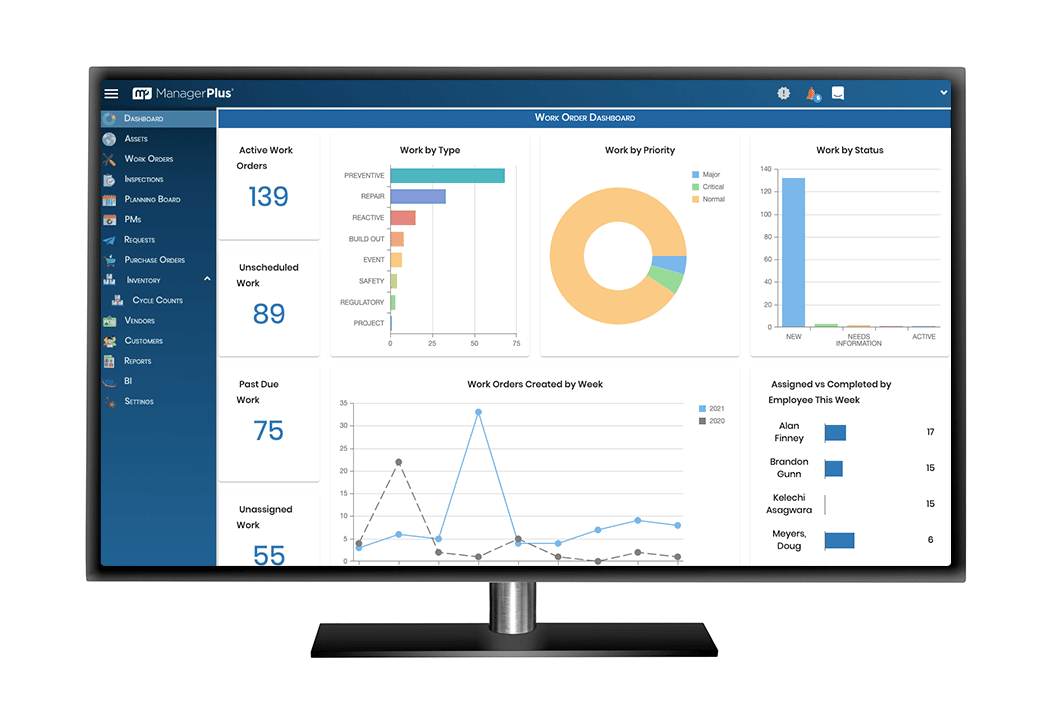
As we’ve already seen, one of the biggest challenges to maintaining wind turbines is their often remote locations. Empower your technicians to have access to all the critical information they need wherever they are with mobile applications and cloud-based EAM software. This makes sure that no matter where your techs are, they are always connected to what they need.
Set up unique QR codes for your assets that your techs can scan with their smartphone or tablet to instantly pull up all the relevant information for that asset, including open work orders, recommended best practices, inventory information, and more.
Wind turbines require many different types of lubrication for the many complex moving parts within the system so make sure you take advantage of the inventory management capabilities within your EAM software to make sure your techs always have the right parts in the right place when they need them.
All of these robust capabilities with EAM software help you develop, implement, and operate a strong preventive maintenance program that helps you keep your costs under control and extend the useful life of your turbines.
Summary
Wind turbines are complex assets with many unique challenges to maintaining them efficiently. Their remote geographic location, immense physical height, relatively new introduction to the industry, and other challenges can quickly raise maintenance costs beyond what is sustainable. Proper maintenance for wind turbines includes things like:
- Regular visual inspections
- Disassembly and overhaul
- Function testing
- Regular and lubrication
- Other repairs and replacements
The most effective way to maintain wind turbines is by implementing a strong preventive maintenance program that helps you anticipate when it’s time for maintenance, and automatically generate and assign work orders when needed. Using preventive maintenance software as part of a larger enterprise asset management (EAM) solution gives you even more control of your wind turbines so you can keep costs low and improve your ROI.
Next steps
Ready to take command of your wind turbine maintenance? The best place to start with getting EAM software for your organization is by talking with the people who know it best. Set up a call with one of our experts so you can share one-on-one the challenges your team is facing and they can help find the solution that’s best for you.


